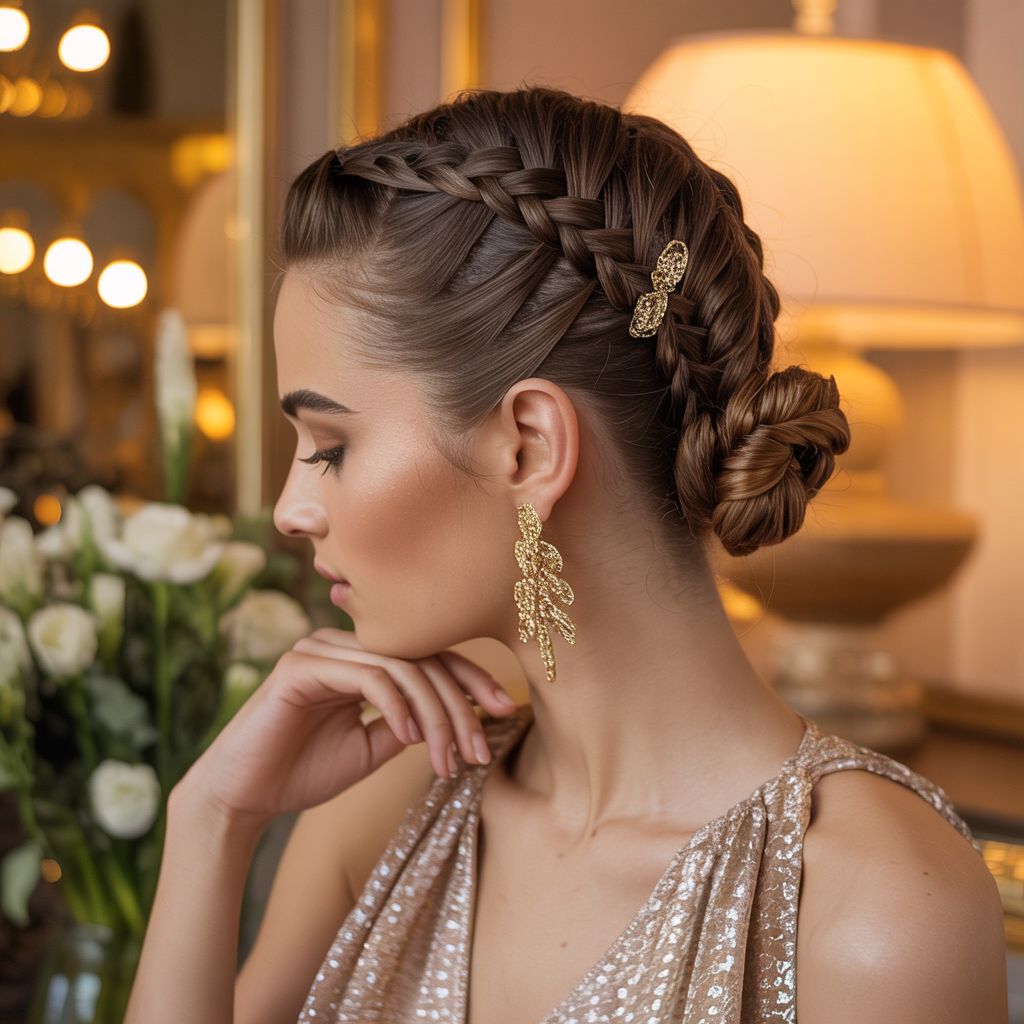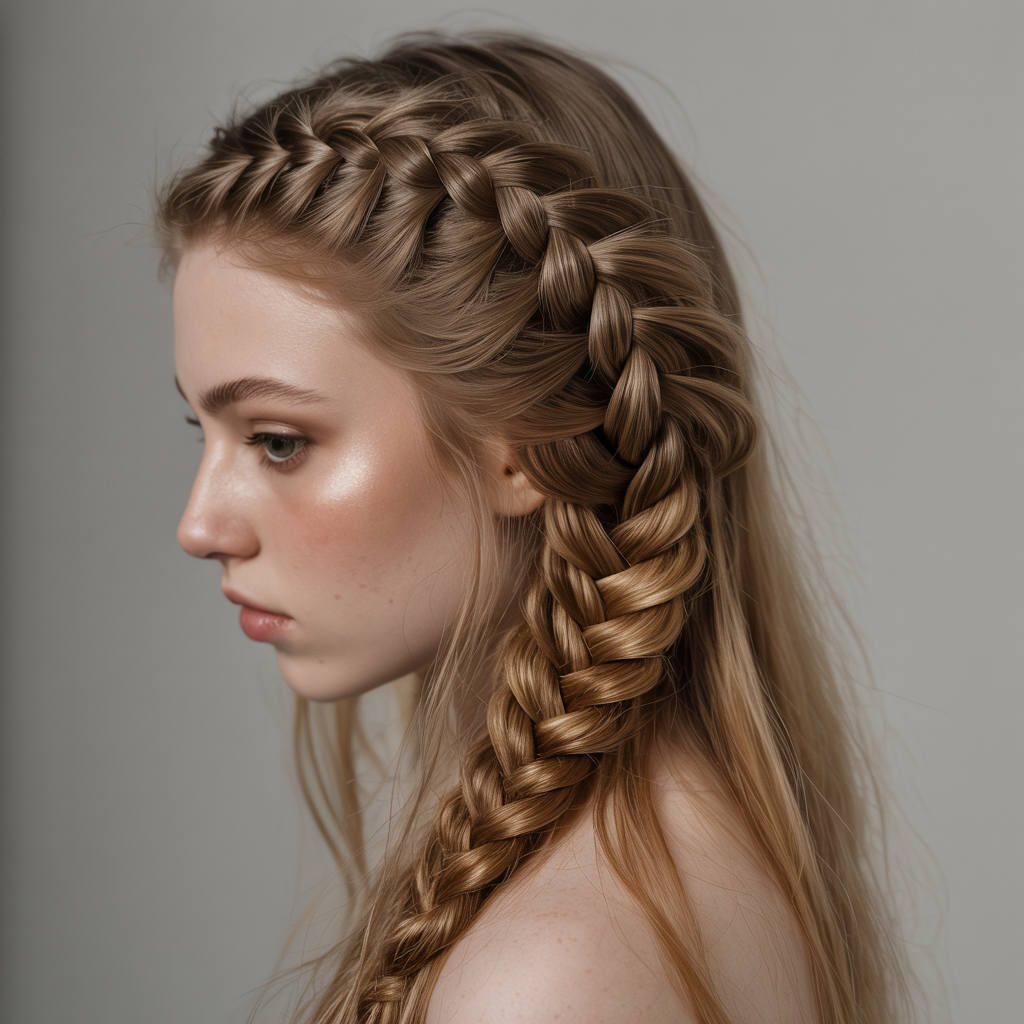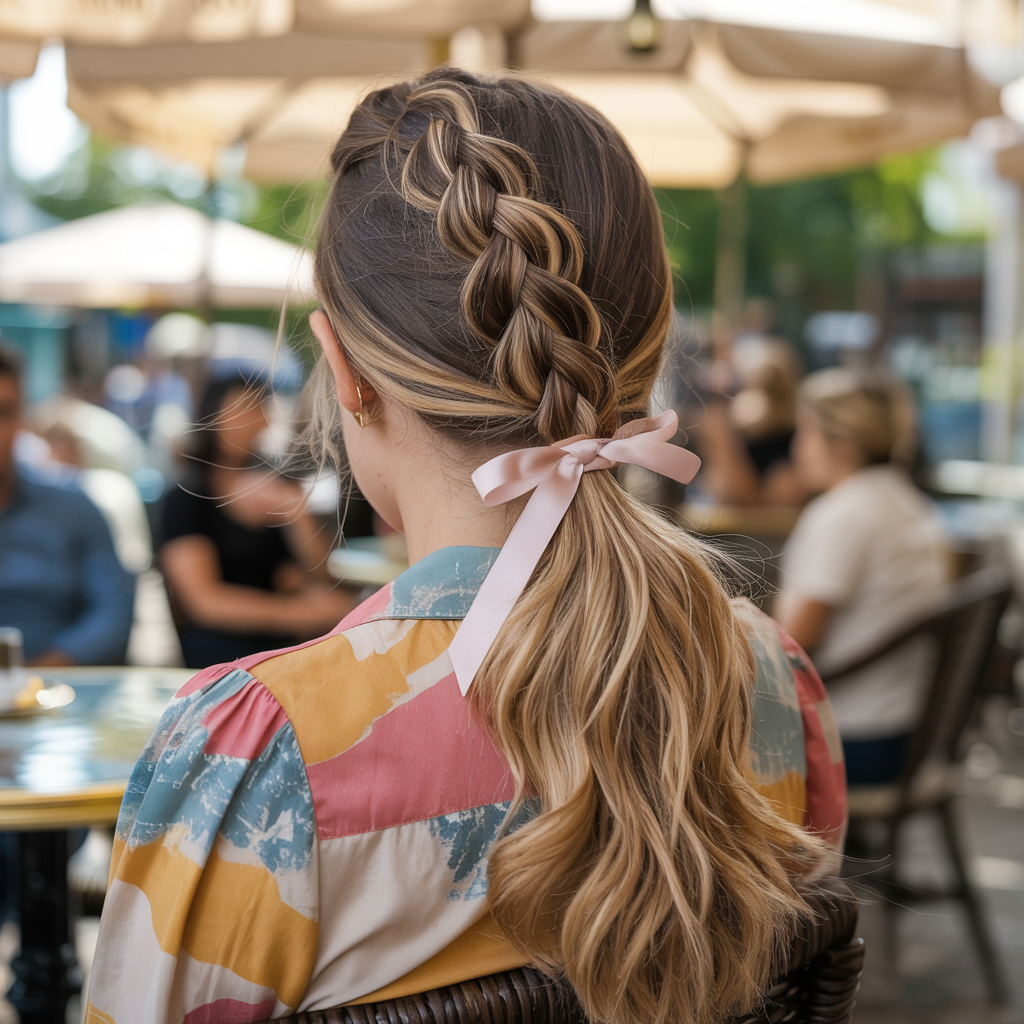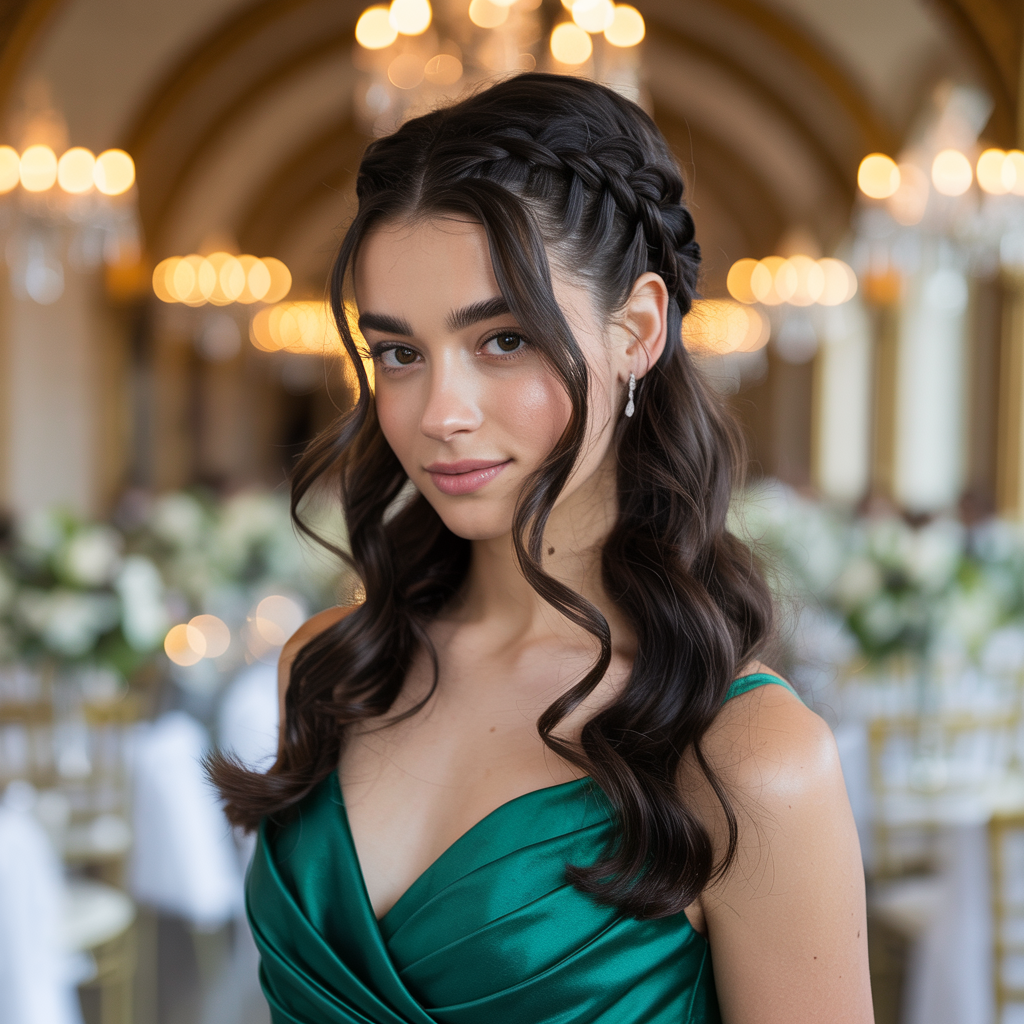Stunning Dutch Braid Hairstyles to Try Now
Quick overview
A durable Dutch Braid Hairstyles, low-fuss braid that lifts hair off the face and lasts. Use this post as a practical catalog: each idea includes what to ask your stylist, how long it holds, and when it works best. Spartan, direct, useful.
Classic crown wrap

A single Dutch braid wrapped around the hairline. Keeps hair neat all day. Ideal for medium to long hair. Fast to refresh with dry shampoo. Tip: gently pancake the braid for width and texture.
Low braided bun

Start with a Dutch Braid Hairstyles along one side and finish in a low bun. Clean, office-ready. Use hairpins and a small elastic. Lasts through commutes and workdays.
Double Dutch braids with loose ends

Two tight braids from the front to nape, left loose at the ends. Sporty, secure, and easy to sleep in. Best for active days or travel.
Side-swept braid

Begin at a deep side part and Dutch-braid toward the opposite ear. Tuck the tail behind the ear for a polished, asymmetrical look. Works on fine or thick hair.
Halo braid with wisps

A halo-style Dutch braid around the head, with face-framing wisps left out. Romantic without fuss. Use a light-hold spray for the wisps only.
Dutch braid into ponytail

Braid from the crown into an elevated ponytail. Adds structure to a simple pony and hides elastics. Great for gym-to-office transitions.
Messy textured braid

Looser, undone Dutch braid with texture spray applied before braiding. Breaks the “too-perfect” look and reads modern. Ideal for casual outings.
Braided bun with accessories

Make a Dutch braid that feeds into a bun and add pins or a small chain. Works for events where minimal accessories are allowed. Keeps shape under humidity if pinned well.
Half-up Dutch braid

Braid the top section and leave the rest down. Gives the impression of an updo while keeping length visible. Fast to create and easy to redo during the day.
Dutch fishtail hybrid

Start with a Dutch braid at the crown and transition to a fishtail on the tail. A subtle twist that looks intricate but is durable. Good for photos and long wear.
Milkmaid-inspired braids

Two Dutch braids lifted and pinned over the crown. Clean, vintage, and practical—keeps hair off the neck in warm weather. Pins should be hidden for a seamless look.
Braided pony with ribbon weave

Weave a thin ribbon into a Dutch braid that ends in a ponytail. Adds color and grip. Use a ribbon with low stretch so it stays put.
Relaxed low braid with face tendrils

A soft Dutch braid at the nape with deliberately loose face tendrils. Works with natural waves and relaxed textures. Minimal product keeps movement natural.
Braided updo for thick hair

Use a Dutch braid to distribute bulk and pin into a c
ompact updo. Effective for thick, heavy hair that needs containment. Ask your stylist for multiple anchor points.
Wet-look Dutch braid

Apply gel to damp hair and braid tightly for a sleek, modern finish. Stays intact in wind and light rain. Best on straight or stretched waves.
Reality-based FAQs
How long does a Dutch-style braid hold without major touch-ups?
Tight, well-secured Dutch braids hold from one to four days depending on hair oiliness and activity. Use a night scarf to extend life.
Can I sleep in a Dutch braid without wrecking it?
Yes. A snug braid plus a silk or satin pillowcase reduces friction. For very long hair, secure the tail to prevent tugging.
Do Dutch braids work on short hair?
They work on short hair if there’s at least chin-length. Use smaller, tighter braids and extra pins. Micro-extension pieces can add length for more complex styles.
Will braiding damage my hair?
When done loosely and not repeatedly in the same spot, no. Tight, continuous braiding without breaks can stress strands and cause breakage. Alternate styles and treat hair with conditioning.
Which products help a Dutch braid last and look better?
Use a lightweight texturizer or powder for grip, a smoothing balm for frizz control, and a light-hold spray for set. Avoid heavy oils before braiding—they reduce hold.
Conclusions
Dutch braids are practical, versatile, and low-maintenance when done with the right approach. Choose the variant that suits your routine: secure styles for active days, relaxed versions for casual wear, and polished updos for formal needs. Protect hair by alternating tension and using simple products to support grip and reduce frizz.
Final Thoughts
Keep it simple. Pick one braid, learn it well, and adapt small details—pancaking, pins, ribbon—to fit each day. The braid should solve a problem (control, style, comfort), not create one.







